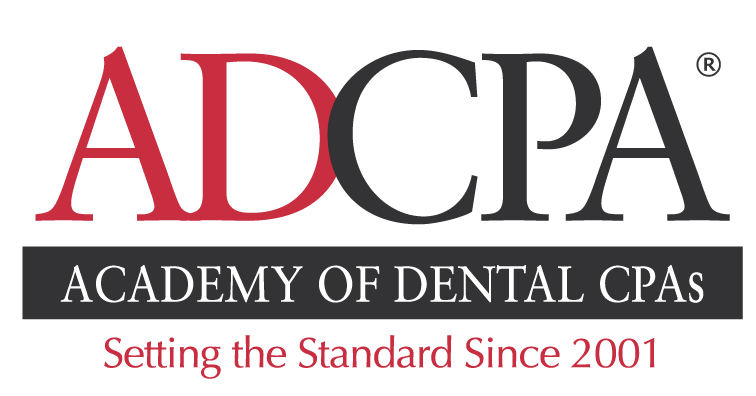Deadlines & Misc.
First Quarter 2023 Estimated Tax Payments are due by Tuesday, April 18, 2023. See Below.
INCOME TAX RETURNS
Tuesday, April 18 is the deadline for timely filing or extending individual income tax returns. In order to avoid penalties and/or interest, 2022 tax due must be paid with the filed return or extension by April 18.
Personal Property Tax
First half taxes are due on or before May 1, 2023. Personal property affidavits are also due May 1, 2023.
STUDY CLUBS
If you would be interested in having us speak at one of your upcoming Study Club events, we would be happy to do so. We can cover a variety of topics including long-term financial planning, transition planning and most popular the new Tax Act – and how it is impacting dentists.
Contact our office for more details. 425.216.1612 or mail@cpa4dds.com
Washington State Capital Gains Tax
In a bit of a surprise, the State Supreme Court has upheld the capital gains tax, meaning the first payments under the new tax are due on April 18th, 2023. There are numerous exceptions to the tax, such as sales of real estate, depreciable assets used in a business, the gain from selling certain small businesses, and assets held in retirement accounts, and we continue to believe that the majority of our clients will not be impacted.
However, this is an unprecedented step in taxing the income of individuals and represents a new source of state revenue. Many fear that it will lead the way to a full-blown state income tax. Officially, the tax is labeled an excise tax, more like a sales tax than a tax on income. Income taxes remain unconstitutional in Washington.
For now, the tax is 7% on net long-term capital gains above $250,000, although critics also point out that there is little to stop the state from increasing the tax percentage, reducing the income threshold, or both.
If your net long-term capital gains as shown on your federal income tax return are less than $250,000 in a given year, you do not owe the Washington capital gains tax, nor are you required to file anything with the state. Even if your net long-term gains exceed $250,000, if some of those gains result from excluded types of property such that your gains subject to the state tax are less than $250,000, you are also exempt from any state tax or filing requirements. However, in some scenarios it may be advisable to still file a state return showing your total net long-term capital gains, then backing out those gains not subject to the state tax.
If you file an extension on your federal income tax return, you are also granted an extension for filing the state return. However, it only extends the time to file, not the time to pay. If you owe under the state capital gains tax, that must still be paid on or before April 15th each year (April 18th this year, due to the 15th falling on a weekend). You would need to estimate your final liability, with any potential overpayment being refunded when you ultimately file.
The filing of the return and payments are made through the State Department of Revenue website. Visit https://dor.wa.gov/taxes-rates/other-taxes/capital-gains-tax for more information.
UNRECEIVED EMPLOYEE RETENTION CREDITS
By now, most have received refund checks for the employee retention credit. However, the IRS has indicated that with the massive influx of amended payroll tax returns (which all had to be paper filed and manually processed), some may have been lost in the shuffle.
If you are still waiting for your refund, we may want to consider filing the returns again. There is no real harm in doing so, other than the processing time and mailing costs. In any event, the statute of limitations for amending payroll returns is three years after the return is filed. For quarterly payroll returns, the “deemed” filing date is April 15th of the following year, regardless of the quarter. So, if you have an unpaid claim for quarter 2 of 2020, for example, and the IRS has no record of it on file, we would need to file again before April 15th, 2024.
IRS ONLINE ACCOUNTS
The ability to establish an individual online account with the IRS has been around for several years. It can be a useful tool for making estimated payments, verifying those payments already made, and ensuring that payments are being applied to the proper tax period. If you have been subject to identify fraud, it can also be used to quickly retrieve the PIN number you need to file your return in case you lost the mailed version or never received it from the IRS (a new PIN is issued each year for victims of identity fraud).
In cases where we need to contact the IRS on your behalf, you can use your account to quickly grant us power of attorney rights instead of having to print, sign, and return physical versions of the forms. With the increase in the number of clients needing IRS assistance, this can be a real time saver.
The benefits of an online account do not come without some cautions, though. The sign-up process can be tricky to navigate at times. It also uses the vendor ID.me for its verification process, which made headlines last year for its use of facial recognition technology. You are not required to use this facial recognition feature, but opting out will increase the amount of time needed to create an account. These are all factors to weigh when deciding whether to create an account.
***BELOW IS ONLY FOR THOSE THAT PAY BY QUARTERLY INSTALLMENTS***
We highly encourage that estimated payments be made online at EFTPS.gov – this very convenient site allows you to enter multiple payments and dates in advance. Call us if you need help!
However, if you still prefer to mail in a paper check:
If we have prepared your 2022 return, you will find pre-printed estimated tax payment vouchers in your TaxCaddy account or in your folder if we mailed your tax return to you. Otherwise, detach or photocopy the voucher below.
- Complete the name, address and social security number sections.
- Fill in amount (call us at 425.216.1612 if you have questions regarding the amount).
- Address your envelope to:
Internal Revenue Service
PO Box 802502
Cincinnati, OH 45280-2502
- Make your check payable to the United States Treasury.
- Note your social security number and “2023 1040-ES” on the memo line of your check.
- Enclose the voucher and check in your envelope addressed to the Internal Revenue Service (see above).
- Mail on or before Tuesday, April 18, 2023.




